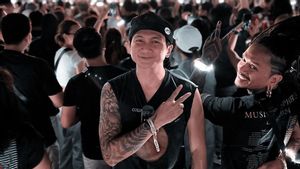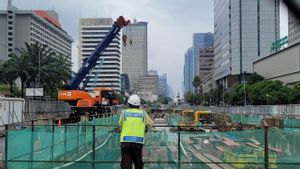JAKARTA - Tourism is often identified by visiting beautiful places and delicious culinary. It is still rare for tourists to visit Wastra Nusantara. Wastra Nusantara is one of the cultural treasures in Indonesia that is very special. The term wastra itself is another name of traditional Indonesian fabric that is very conditional on meaning.
Each region has a distinctive wastra nusantara, be it from the materials used, motifs, colors and also its size. One of the lovers of wastra nusantara tourism is Culture Traveller, Laely Indah Lestari.
In his activities doing cultural travel, Laely always took the time to explore Wastra Nusantara in the corners of Indonesia that he visited. This is always done on every trip with the aim to preserve Indonesian culture through the work of traditional cloth touches by the nation's children.
"So many wastra from Sabang to Marauke that can be lifted, even many are not yet known, and it is our obligation to preserve it," Laely said when contacted Saturday, May 22.
Wastra Nusantara itself is a hereditary ancestral relic that became a valuable asset for Indonesian culture. Wastra has a social position that is very valuable in many regions in Indonesia, each wastra sheet has its own uniqueness and story in its history. "Wastra Nusantara has philosophical values that in its sense, we should know it so that the love and pride of the nation continues to grow and always be in the heart. Because in essence loving wastra means also having to take care of it, learn it, wear it, and preserve it," explained Laely very enthusiastically.

Laely exemplifies his visit when he got to know the bark fabric of the Bada Tribe. Making bark fabrics in the interior of Central Sulawesi has become increasingly rare. But until now there are still some people who are still working specifically for the purposes of traditional ceremonies that are commonly performed for their rituals.
While visiting the Bada Tribe of Central Sulawesi, Laely took the time to learn more about the process of making the bark fabric. The process is very long and long, until it becomes a piece of ethnic cloth that he then used in conducting a series of customary activities while visiting Central Sulawesi. Laely learned to make a piece of bark by being hit repeatedly using the Ike stone tool.
Laely also learned to make Toraja Weaving in Sadan Tobaran In this weaving coloring process using natural processes, for example green color on the leaves and red color on the skin. Until now the weavers still use very traditional looms.
Interestingly in Toraja this skill of making weaving is passed down through generations. In Sa'Dan area, Laely does learning activities from spinning a thread, to learning to weave.
The English, Chinese, Japanese, Arabic, and French versions are automatically generated by the AI. So there may still be inaccuracies in translating, please always see Indonesian as our main language. (system supported by DigitalSiber.id)












